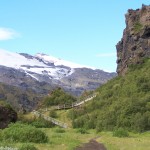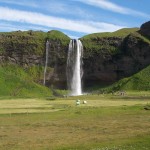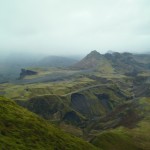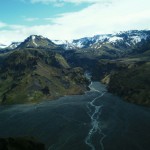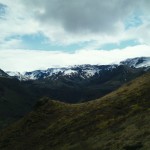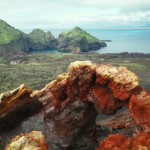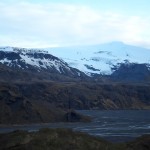To me, it is often the landscape of a place that has the largest and most impactful statement.
From the moment I first saw a glimpse of the Icelandic landscape, I was immediately drawn to its majestic beauty of constant, rolling mountains. Mountains never speak. In a biological sense, they never breathe. But what if we took into consideration the “thoughts” of a mountain as environmentalist Aldo Leopold did?
So far while here in Iceland, there have already been several group discussions, class meetings, and educational readings that have moved me. One of the most impactful experiences, however, was when we all took a walk down the road from Solheimar to a nearby river. As a group exercise, we all walked silently together on our way there, and sat for several minutes looking out over the pristine scenery. For me, the silence added to the peaceful essence and my personal contemplations. Silence sometimes makes me feel much more comfortable than words. I am able to debrief life, let my mind wander from here to there, and organize my sometimes chaotic and busy thoughts. The only sound (aside from the crunches of our footsteps) was the wind, which enhanced and intertwined with my thoughts. The wind flowed in to meet my mind—not abrasively or distractingly as one may initially assume, but proactively and encouragingly. While alone in my thoughts, I am able to feel at one with my own body and one with Earth. I can connect this walk to several of my previous hiking adventures, yoga practices, and especially solo kayaking trips; I find myself being closer than I ever have been before to the realization of life’s own meaning and purpose.
The rolling mountains that we viewed while on our river hike—and the mountains, river valleys, and volcanoes that we will be experiencing throughout our time here—symbolize to me a deeper interpretation of what it means to transform one’s frame of mind. I have seen before the vast landscapes of river valleys from other places I have been (Driftless Wisconsin and West Virginia’s Canaan Valley for example), and find uniqueness in landscape I see. How can the beauty of the same exact geologic features—mountains, in this case—be so different and unique from region to region, country to country? It is only when we begin to look outside the box, and expand our horizons upon what we see, that we contextually observe the connections and similarities of an object’s distinctiveness and individuality.
I was touched by what one of my fellow students quoted the other day as we discussed our Educational Maps: “You begin living when you step outside your comfort zone.” This statement is definitely holding true for me so far this semester. I have begun to step outside of my comfort zone and throughout the semester will be trying new things, experiencing new feelings, and realizing new perspectives. It might be challenging at times, but I am much more excited to see the new and improved me waiting on the other side of this once-in-a-lifetime journey.
-Leah Jaynes

